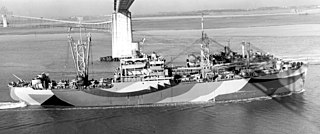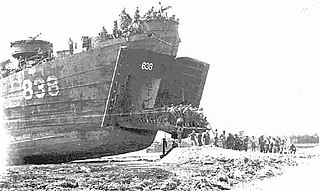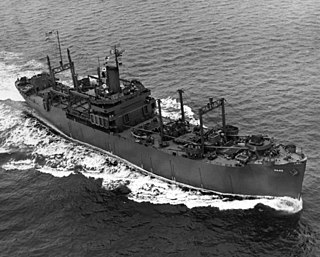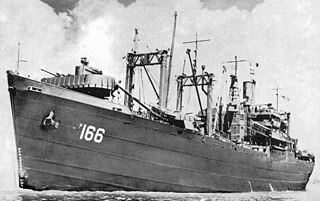External links
- The short film The 957th Day is available for free viewing and download at the Internet Archive .
| The 957th Day | |
|---|---|
| Produced by | United States Navy |
Release date |
|
Running time | 10 minutes |
| Country | United States |
| Language | English |
The 957th Day was a propaganda short produced by the US Navy in 1944.
The film uses authentic battle footage of the taking of Guam on July 21, 1944, and one narration follows the battle chronologically, while another narration mimics a radio news caster voice. The newscaster related mundane activities like baseball standings, what song is on the top of the charts, and weather, but also news relative to the war effort, like the amount of steel that Pittsburgh has shipped, the monthly Selective Service quota, and the news that one worker got a medal for not missing one day of work since Dec. 8, 1941. This is all superimposed on some very graphic combat footage.
The combat footage is compiled from several days of fighting and actually begins with ships readying for the invasion at Eniwetok (in June). The bombardment of the island lasted for thirteen days and the invasion of Guam was the beginning of a much longer battle. The film leads the viewer to believe that the island was secured on July 21, 1944, when in fact the island was not declared secure until August 10, 1944 after the loss of nearly 19,000 dead between the two sides.

USS Independence (CVL-22) was a United States Navy light aircraft carrier. The lead ship of her class, she served during World War II.

The Mariana and Palau Islands campaign, also known as Campaign Plan Granite II, was an offensive launched by United States forces against Imperial Japanese forces in the Pacific Ocean between June and November 1944 during the Pacific War. The campaign consisted of Operation Forager, which captured the Mariana Islands, and Operation Stalemate, which captured Palau. Operation Causeway, the invasion of Taiwan was also planned but not executed. The offensive, under the overall command of Chester W. Nimitz, followed the Gilbert and Marshall Islands campaign and was intended to neutralize Japanese bases in the central Pacific, support the Allied drive to retake the Philippines, and provide bases for a strategic bombing campaign against Japan.

The Battle of Guam was the American recapture of the Japanese-held island of Guam, a U.S. territory in the Mariana Islands captured by the Japanese from the United States in the First Battle of Guam in 1941 during the Pacific campaign of World War II. The battle was a critical component of Operation Forager. The recapture of Guam and the broader Mariana and Palau Islands campaign resulted in the destruction of much of Japan's naval air power and allowed the United States to establish large airbases from which it could bomb the Japanese home islands with its new strategic bomber, the Boeing B-29 Superfortress.

USS Howorth (DD-592) was a Fletcher-class destroyer built for the United States Navy during World War II.

USS O'Flaherty (DE-340) was a John C. Butler-class destroyer escort built for the United States Navy during World War II. She was named for Ensign Frank Woodrow O'Flaherty, a pilot who posthumously received the Navy Cross for his actions at the Battle of Midway.

USS Appalachian (AGC-1) was the lead ship of the Appalachian class amphibious force flagships of the United States Navy. She was laid down under a Maritime Commission contract on 4 November 1942 at the Federal Shipbuilding & Drydock Company in Kearny, New Jersey; launched on 29 January 1943, sponsored by Mrs. John Frank Mclnnis; acquired by the Navy on 27 February 1943; converted at Brooklyn, N.Y., by the Todd Shipbuilding Company for naval service as an amphibious flagship; and commissioned on 2 October 1943.

USS Healy (DD-672) was a Fletcher-class destroyer of the United States Navy.

USS Tate (AKA-70) was a Tolland-class attack cargo ship in service with the United States Navy from 1944 to 1946. She was sold into commercial service and was scrapped in 1970.
The Fleet That Came to Stay was a propaganda short film produced by the US Navy in 1945 about the naval engagements of the invasion of Okinawa.

USS Hunterdon County (LST-838) was an LST-542-class tank landing ship built for the United States Navy during World War II, and later reconfigured and recommissioned for riverine warfare during the Vietnam War. Named after Hunterdon County, New Jersey, she was the only U.S. Naval vessel to bear the name.

USS Dionne (DE-261) was an Evarts-class destroyer escort of the United States Navy during World War II. She was sent off into the Pacific Ocean to protect convoys and other ships from Japanese submarines and fighter aircraft. She performed escort and antisubmarine operations in dangerous battle areas and returned home with six battle stars, a high number for a ship of her type.

USS Lipan (AT-85) was a Navajo-class fleet tug constructed for the United States Navy during World War II. Her purpose was to aid ships, usually by towing, on the high seas or in combat or post-combat areas, plus "other duties as assigned." She served in the Pacific Ocean during World War II and the Korean War. She was awarded two battle stars for World War II and four battle stars for the Korean War.

USS Harry Lee (APA-10) was a Harry Lee-class attack transport that saw service with the US Navy during World War II. She served in the Pacific War, as well as in North Atlantic Ocean operations, and safely returned home post-war with seven battle stars to her credit. She was the only ship in her class.

USS Feland (APA-11) was a Doyen-class attack transport in service with the United States Navy from 1943 to 1946. She was scrapped in 1964.

USS Fayette (APA-43) was a Bayfield-class attack transport that served with the United States Navy from 1943 to 1946. In 1947, she was sold into commercial service, where she served as SS Robin Gray until being scrapped in 1972.

USS Audrain (APA-59) was a Gilliam-class attack transport that served with the US Navy during World War II.

The Fight for the Sky is a short propaganda film commissioned by the US government to highlight the victories of the Allied air forces over Europe prior to the Normandy invasion.

The Japanese occupation of Guam was the period in the history of Guam between 1941 and 1944 when Imperial Japanese forces occupied Guam during World War II. The island was renamed Ōmiya-Jima.

The 22nd Marine Regiment is an inactive United States Marine Corps infantry regiment. The regiment was commissioned in 1942 and was placed under the command of the 1st Provisional Marine Brigade in 1944, and the 6th Marine Division in 1945. It took part in fighting at the battles of Eniwetok, Guam, and Okinawa. The regiment also participated in the occupation of northern China following the war. 22d Marines was decommissioned in March 1946.

The third USS Comet (AP-166) was a United States Navy La Salle-class transport in commission from 1944 to 1946. She saw service in the Pacific Theater of Operations during the latter stages of World War II and the immediate postwar period.